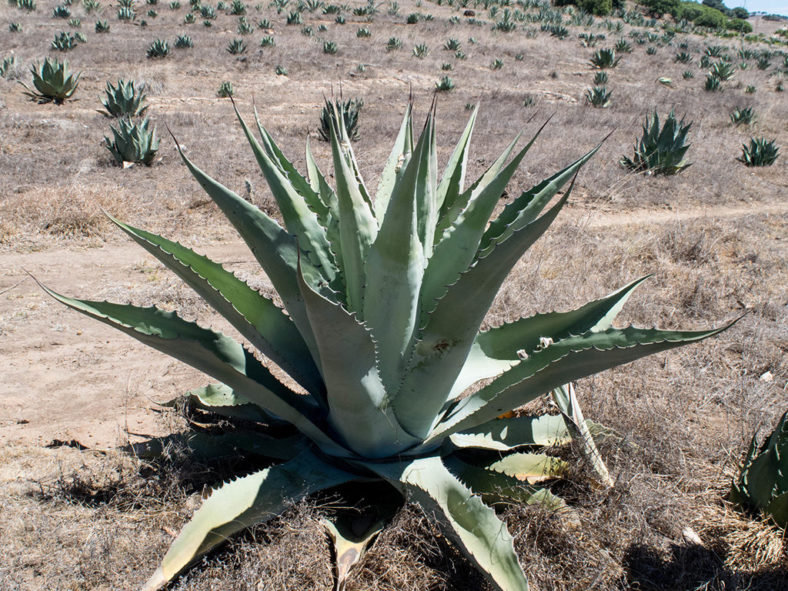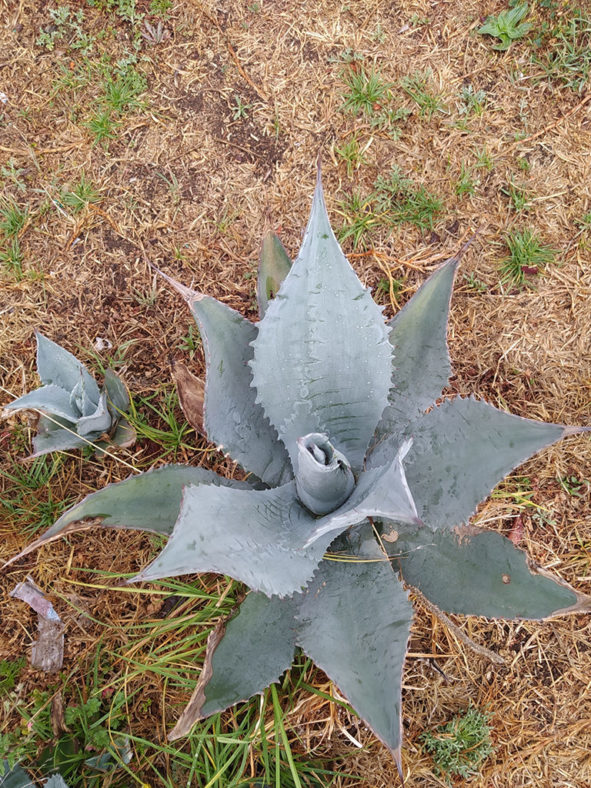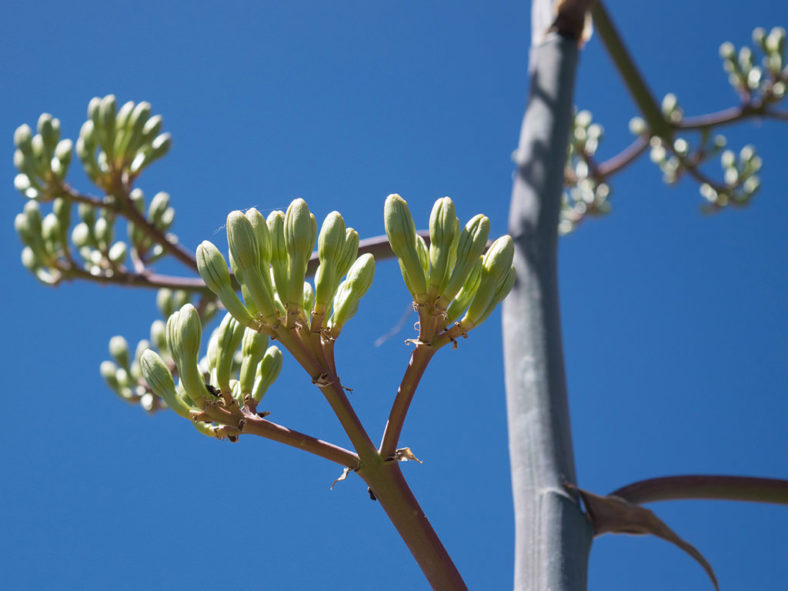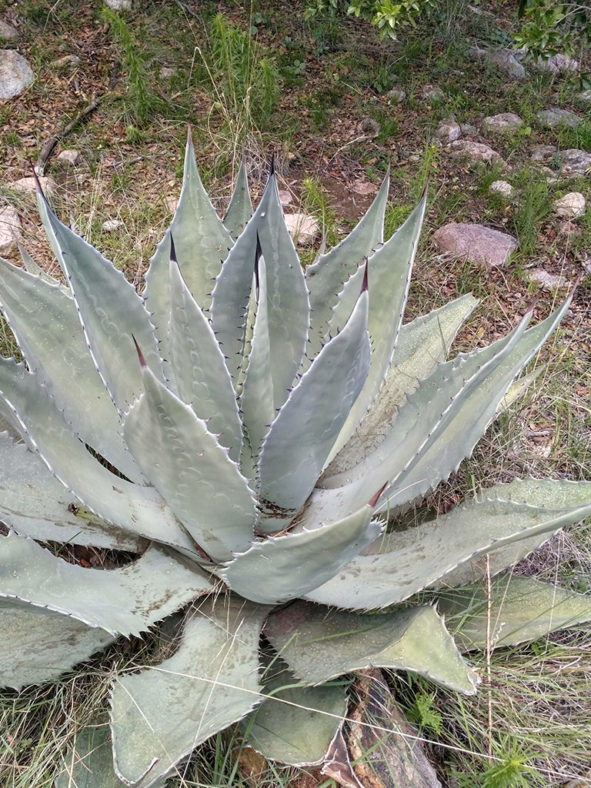Scientific Name
Agave durangensis Gentry
Common Name(s)
Maguey Cenizo (local name)
Scientific Classification
Family: Asparagaceae
Subfamily: Agavoideae
Genus: Agave
Etymology
The specific epithet "durangensis (dur-rang-EN-sis)" means "оf or from Durango" and refers to the native distribution of the species in the Mexican state of Durango.
Origin
Agave durangensis is native to Mexico. It occurs in scattered locations at elevations above 5,000 feet (1,525 m) in the Sierra Madre Occidental.
Description
Agave durangensis is a succulent plant that forms large rosettes of thick, fleshy, ashy-green leaves with a rough-textured surface, nipple-like projections at the base of each marginal thorn, and a brown terminal spine. The rosettes grow usually solitary or offsetting sparingly and can reach up to 6 feet (1.8 m) in diameter. The leaves can measure up to 3 feet (90 cm) long and 9 inches (22.5 cm) wide.
The flowering spike emerges from the center of the mature rosettes. It can grow up to 26 feet (8 m) tall, producing branches with large clusters of erect pale yellow flowers. The rosette dies after flowering.

How to Grow and Care for Agave durangensis
Light: Like all Agaves, this plant requires full sun to partial shade. If growing A. durangensis indoors, choose a bright, sunny window with as much sun as possible. From spring to fall, it loves going outside.
Soil: A. durangensis will tolerate most soils as long as they have good drainage, but its preference is sandy or rocky soil.
Hardiness: During the growing season, it likes warm temperatures, while in winter, when resting, this succulent enjoys cooler temperatures. A. durangensis can withstand temperatures as low as 20 to 45 °F (-6.7 to 7.2 °C), USDA hardiness zones 9a to 11b.
Watering: From spring to fall, water thoroughly when the soil becomes dry. In winter, water sparingly about once a month. Plants in containers require more frequent watering than those in the ground.
Fertilizing: Give your A. durangensis a small amount of fertilizer in the spring during the first two years. Established plants seem to take care of themselves.
Repotting: If you notice your A. durangensis becoming pot-bound, repot it with fresh soil in a pot slightly larger than the old one. Give the plant a week or so to readjust before watering it again.
Propagation: Since it can take years to produce seeds, A. durangensis is usually propagated by offsets. The best time to remove the offsets is in spring and summer. Sow the seeds in spring.
Learn more at How to Grow and Care for Agave.
Toxicity of Agave durangensis
A. durangensis is not toxic to humans but may be mildly poisonous to children and pets.
Links
- Back to genus Agave
- Succupedia: Browse succulents by Scientific Name, Common Name, Genus, Family, USDA Hardiness Zone, Origin, or cacti by Genus
Photo Gallery
Click on a photo to see a larger version.


